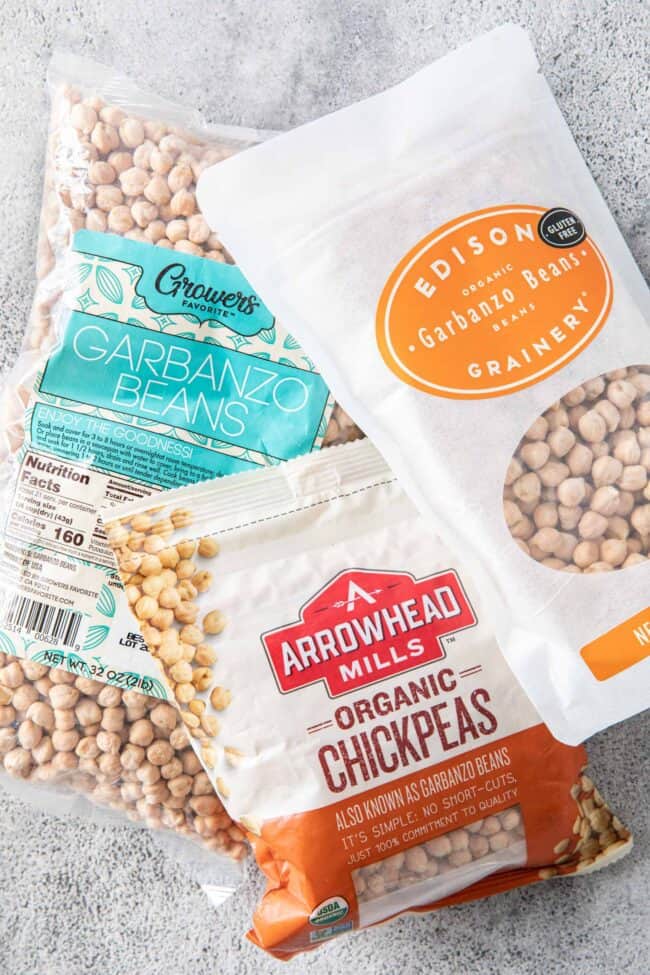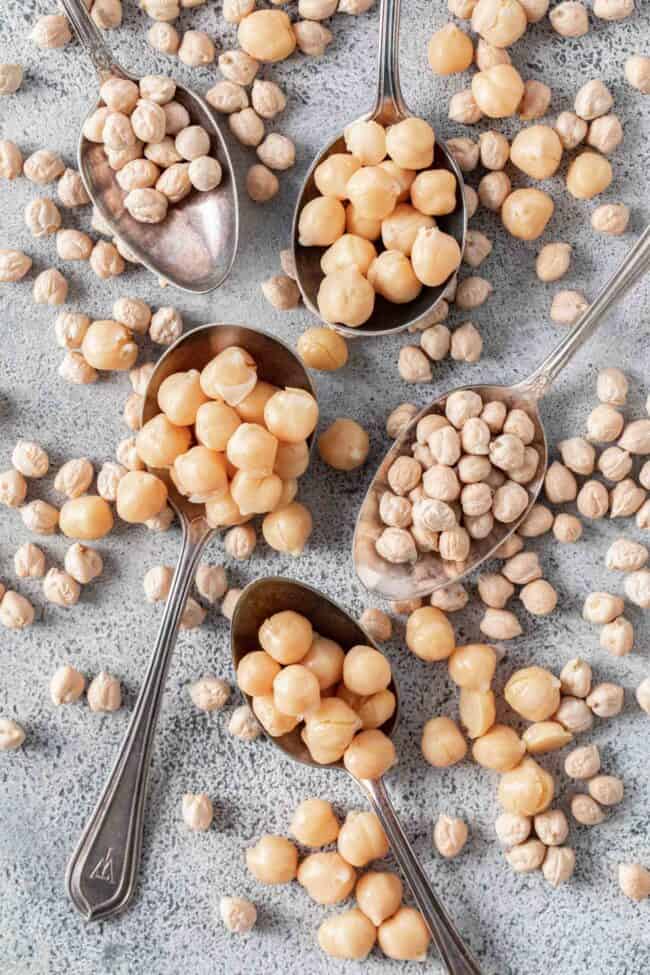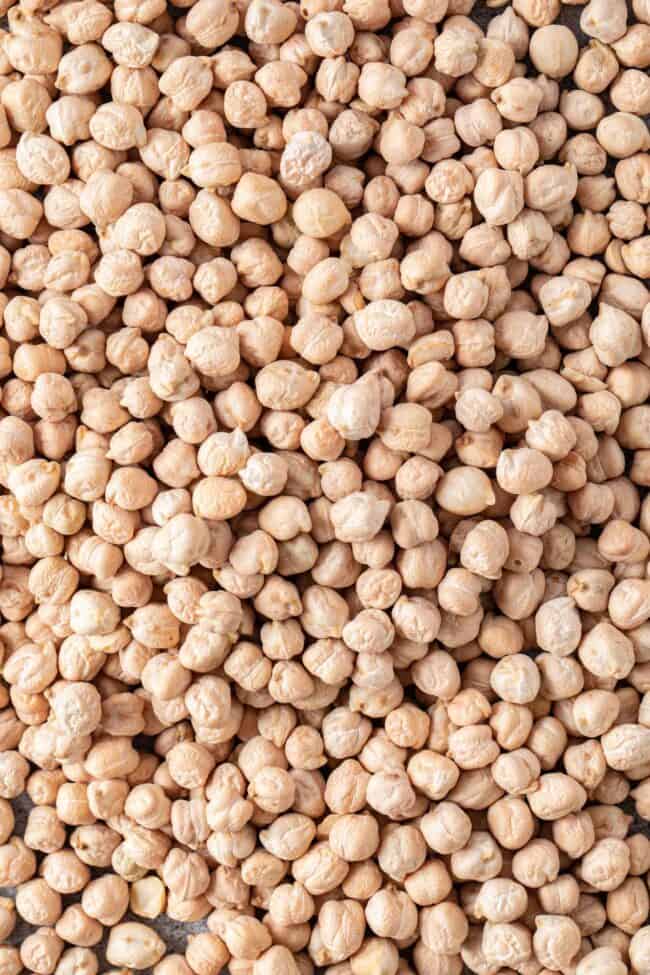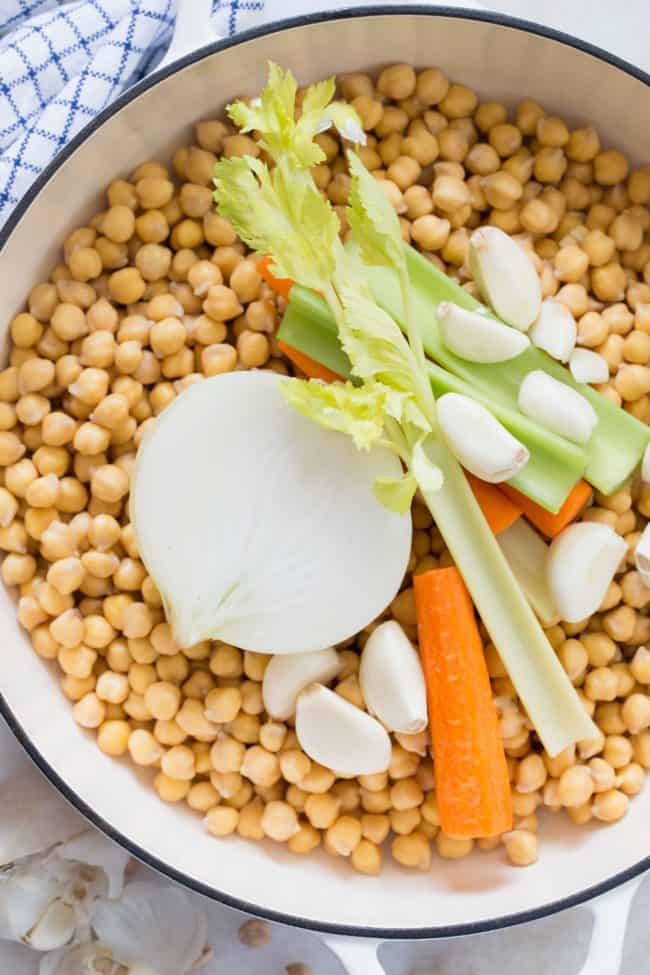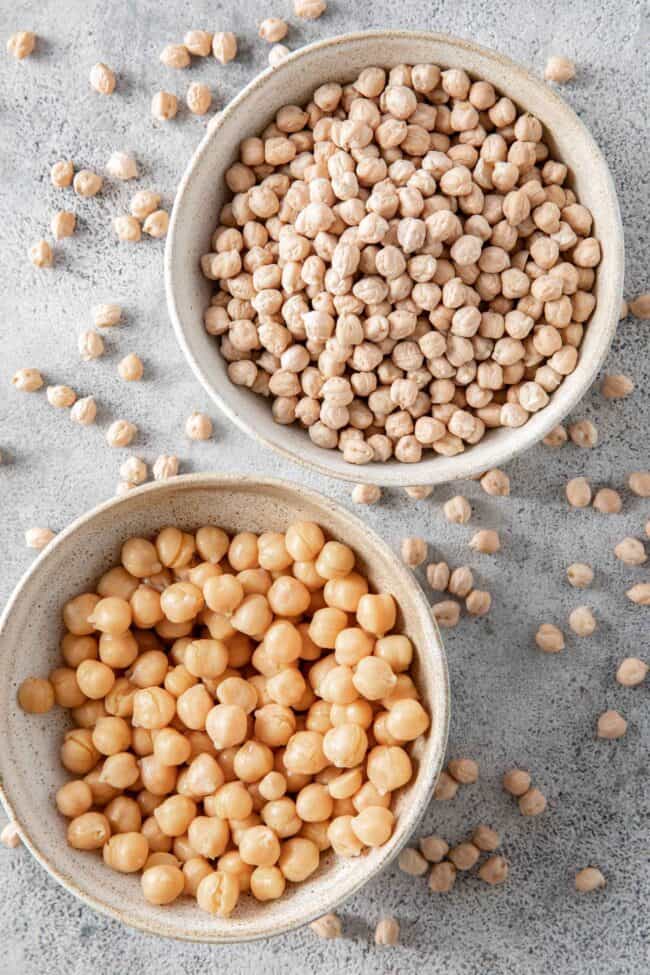Chickpeas vs Garbanzo Beans
Here’s everything you need to know about Chickpeas. What are chickpeas? What’s the difference between Chickpeas vs Garbanzo Beans? Are chickpeas gluten-free? How to cook them, plus 21 garbanzo bean recipes.
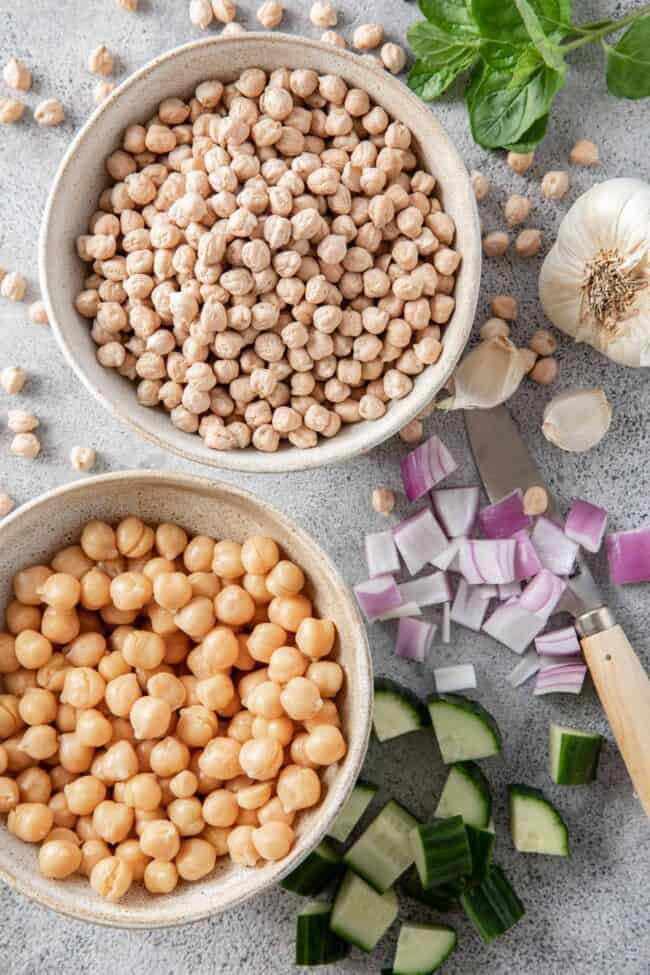
Chickpeas have a delicious nutty and buttery flavor with a creamy texture, making them wonderful to toss in soups, salads, skillets and stews.
What Are Chickpeas?
Chickpeas are pale, round, cream colored legumes and are frequently used in the Mediterranean, Indian, Middle Eastern, American and Latin American cuisine. In Latin America chickpeas are called “garbanzo” and in Italy they’re called “ceci”. The name chickpea comes from the Latin word “Cicer” which refers to the plant family of legumes called Fabaceae. It’s thought that chickpeas originated in the Near East and were cultivated as far back as 7000 B.C.
What Do Chickpeas Taste Like?
Chickpeas have a creamy texture with a delicate nutty flavor.
Are Chickpeas and Garbanzo Beans the Same Thing?
Chickpeas and garbanzo beans are the same exact thing, only they are called by two different names “chickpeas” (Latin word) and “garbanzo” beans (Spanish word). There is no difference whatsoever between garbanzo beans vs chickpeas.
Types of Chickpeas
There are two main varieties of chickpeas – “Kabuli” and “Desi”. Small Desi chickpeas are yellow on the inside and Kabuli are larger and cream colored with a thin skin. Kabuli chickpeas are the most common type found in American grocery stores.
- Chana dal – These are small split chickpeas that look like yellow split peas. They have nutty sweet flavor.
- Chickpea shoots – These are feather-like shoots from the chickpea plant. They can be hard to find (maybe at farmers’ markets) and great added to salads.
- Green chickpeas – These are young gender fresh chickpeas with a sweet taste.
Are Chickpeas Gluten Free?
Chickpeas are naturally gluten free. But when you purchase chickpea products at the grocery store (such as hummus) take a look at the labels to make sure there are no other ingredients in them which may contain gluten in case you need a gluten-free product for dietary reasons.
Cooking Chickpeas from Scratch
Opening a can of chickpeas is convenient, but homemade tastes superior.
To cook chickpeas from scratch, soak whole dried chickpeas overnight in water before cooking. Or use the quick soak method by placing them in a saucepan filled with enough water to cover them by 2 inches. Boil them for 2 minutes then remove from heat and cover. Let them rest in the water for an hour, then drain them and cover with fresh water before cooking. Split chickpeas (like chana dal) don’t need to be pre-soaked before cooking.
Are Canned Chickpeas Cooked?
Yes, canned chickpeas have already been cooked. All you need to do is open the can, rinse them under cold water, drain and pat dry. Remove any loose outer skins that you can then toss them in soups, stews, skillets and salads.
Recipes with Garbanzo Beans
If you’re wondering how to use chickpeas, the possibilities are endless really. Whether the chickpeas have been cooked from scratch or come from a can, they’re great to add to so many recipes.
- Sprinkle them in salads: Italian Chopped Salad, Mediterranean Bean Salad, Mediterranean Quinoa Salad, House Salad, Mediterranean Cucumber Chickpea Salad
- Stir them into soups: Vegan Mulligatawny, Coconut Curry Chickpea Soup, Minestrone Soup and Chickpea Noodle Soup
- Roast and season them for a healthy snack
- Stuff celery stalks with pureed chickpeas seasoned with lemon juice, salt and pepper.
- Use them to make these delicious Chickpea Patties
- Blend them to make hummus: Jalapeno Hummus and this Spinach Hummus
- Serve them warm with cooking broth, then a drizzle of olive oil, some freshly chopped tomatoes, basil ribbons and parmesan cheese.
- Add them to skillet recipes like this Vegan Breakfast Skillet, Spinach and Chickpeas and this Chicken Chermoula
- Add them to egg salads, tuna salads and chicken salads like this Chickpea Tuna Salad, Chickpea Egg Salad, and this Curried Chickpea Salad
- Add them to stews like this Easy Chickpea Stew
Conclusion
Garbanzo beans vs chickpeas
Chickpeas and garbanzo beans are the same exact same legume. They are just called by two different names – “chickpeas” (Latin word) and “garbanzo” beans (Spanish word).
Are chickpeas gluten-free
Yes chickpeas are gluten free.
More Resources
- Chives vs Green Onions – Learn the differences between chives and green onions and how to use them in recipes.
- Tomato Sauce vs Paste – Learn the differences between tomato sauce and paste and how to use them in recipes.
- Black Beans vs Pinto Beans – Learn about black beans and pinto beans and which is healthier, plus recipes.
- Is Avocado A Fruit – Learn all about avocados, how to choose them, use them, store them, plus recipes.
- Spinach – Learn all about spinach, how to store it, cook with it, recipes and more.
- Plum Tomatoes – Learn all about plum tomatoes and how they differ from other tomatoes.
- Shallots vs Green Onions – Learn about shallots and how they differ from green onions.
- Mandarin Oranges – Learn about the different types of mandarin oranges, plus recipes.
- English Cucumber – Learn all about the different types of cucumbers, how to serve them, plus recipes.
- Arugula – Learn about arugula, the benefits, how to serve it, plus recipes
- Quinoa – Learn everything you need to know about quinoa, how to cook it, plus recipes
- Lentils – Learn about the different types of lentils, how to cook them, how to use them, plus recipes.
- Parsley – Learn about the benefits of parsley, different types and how to use it
